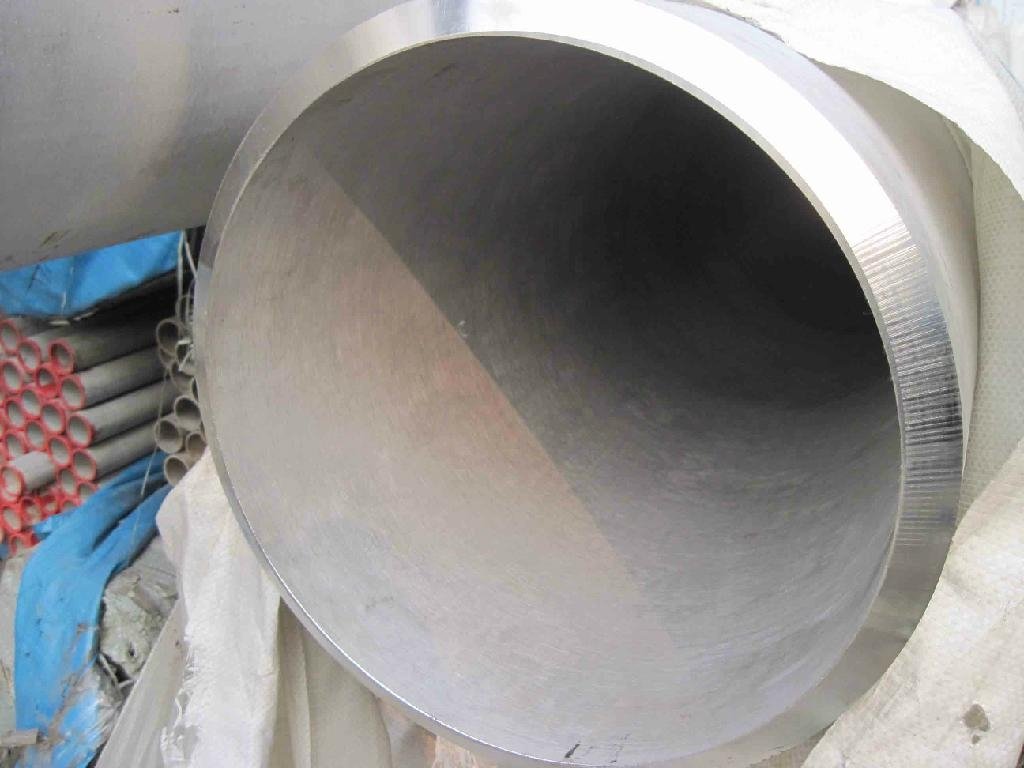347 347H stainless steel tube
Model No.︰BS-SSPT
Brand Name︰BS
Country of Origin︰China
Unit Price︰-
Minimum Order︰1 ton
Product Description
Product Introduction: 347/347H Alloys
347 and 347H alloys, identified by their UNS designations S34700 and S34709, are exceptional austenitic stainless steels known for their excellent corrosion resistance, high-temperature stability, and strength. These alloy grades are particularly suited for applications in both moderate and high-temperature environments, making them essential in various industries including petrochemical, power generation, and food processing. This introduction explores the physical properties, chemical composition, product specifications, and applications of these alloys in the annealed condition, particularly within the temperature range of -20°F to +100°F.
Physical Properties
The mechanical performance of 347 and 347H alloys is characterized by significant tensile and yield strengths. Both alloys exhibit a tensile strength up to 75,000 psi (515 MPa), which is critical for structural integrity under various loading conditions. Furthermore, the yield strength is stable at 30,000 psi (205 MPa), providing a dependable performance in applications where resistance to deformation is paramount.
An important attribute of 347 and 347H alloys is their elongation capability—both grades offer a minimum elongation of 35% in a 2-inch gauge length, indicating their ability to withstand substantial strain without failure. This ductility makes them suitable for forming and welding processes.
In terms of hardness, 347H specifically requires a grain size of 7 or coarser, contributing to its toughness and resistance to cracking, especially in high-stress applications. Both alloys have a modulus of elasticity of approximately 29.0 x 10^6 psi, facilitating reliable dimensional stability. The mean coefficient of thermal expansion is listed as 9.2 x 10^-6 in/in/°F, ensuring minimal dimensional changes during temperature fluctuations. Their thermal conductivity remains unspecified, though it is expected to be favorable for heat transfer applications.
Chemical Composition
The chemical composition of 347 and 347H alloys is pivotal in dictating their performance characteristics. For the 347 grade, the maximum carbon content is limited to 0.08%, while 347H has a slightly flexible range between 0.04% and 0.10%. The inclusion of manganese is capped at 2.00% for both alloys, supporting overall toughness and corrosion resistance.
Chromium content in both grades ranges from 17.0% to 20.0%, enhancing their ability to resist oxidation and corrosion. Nickel is another critical component, comprising 9.0% to 13.0% of the alloy, which improves ductility and weldability. Additionally, the two grades do not include molybdenum or nitrogen, which are often considered in other high-performance alloys.
The balance of the composition is primarily iron, with a significant requirement for the carbides formed through the addition of columbium (Cb) and tantalum (Ta). For 347, the equation is Cb + Ta = 10xC - 1.0, while for 347H it is Cb + Ta = 8xC - 1.0. These carbide-forming elements are instrumental in stabilizing the alloy, particularly in high-temperature settings.
Product Range and Specifications
347 and 347H alloys are available in various forms, including pipes, tubes, and fittings, and are compliant with multiple industry standards such as A269, A/SA249, and A/SA312. The versatility of these specifications ensures that the alloys can effectively meet the needs across different applications, whether it be in pressure vessels, heat exchangers, or boiler systems.
Applications
The 347/347H alloys are widely utilized in high-temperature applications, thanks to their outstanding oxidation resistance and mechanical performance at elevated temperatures. They are particularly used in the petrochemical industry for components exposed to corrosive environments and high temperatures. The food processing industry also relies on these alloys due to their excellent corrosion resistance and ease of sanitation.
Further applications include the construction of heat exchangers, reactors, and exhaust systems in power generation facilities where the material must withstand harsh conditions and maintain structural integrity over time.
Conclusion
347 and 347H alloys are critical materials in modern engineering, combining excellent mechanical properties and corrosion resistance to deliver high performance across a variety of industrial sectors. Their specific properties enable engineers to utilize these alloys in challenging environments, ensuring durability and reliability. With an established reputation for high-temperature applications and corrosive resistance, 347 and 347H stand as prominent choices for demanding engineering solutions in today’s industrial landscape.
